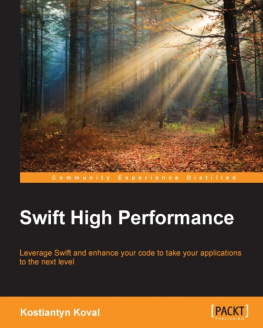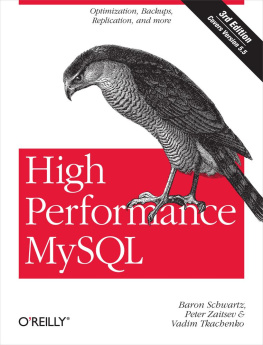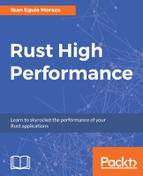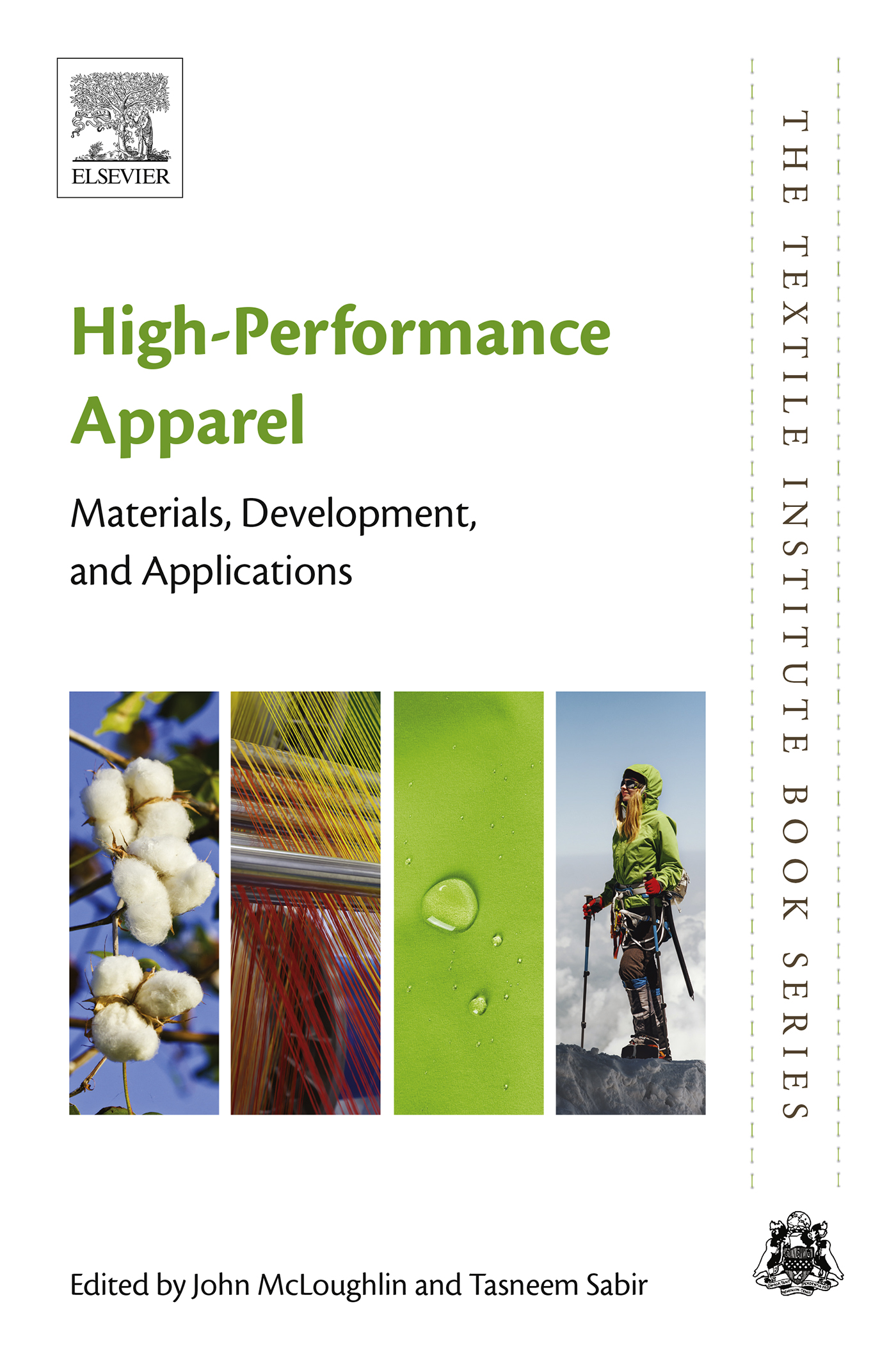High-Performance Apparel
Materials, Development, and Applications
First Edition
John McLoughlin
Manchester Metropolitan University
Tasneem Sabir
Manchester Metropolitan University

Copyright
Woodhead Publishing is an imprint of Elsevier
The Officers Mess Business Centre, Royston Road, Duxford, CB22 4QH, United Kingdom
50 Hampshire Street, 5th Floor, Cambridge, MA 02139, United States
The Boulevard, Langford Lane, Kidlington, OX5 1GB, United Kingdom
2018 Elsevier Ltd. All rights reserved.
No part of this publication may be reproduced or transmitted in any form or by any means, electronic or mechanical, including photocopying, recording, or any information storage and retrieval system, without permission in writing from the publisher. Details on how to seek permission, further information about the Publisher's permissions policies and our arrangements with organizations such as the Copyright Clearance Center and the Copyright Licensing Agency, can be found at our website: www.elsevier.com/permissions.
This book and the individual contributions contained in it are protected under copyright by the Publisher (other than as may be noted herein).
Notices
Knowledge and best practice in this field are constantly changing. As new research and experience broaden our understanding, changes in research methods, professional practices, or medical treatment may become necessary.
Practitioners and researchers must always rely on their own experience and knowledge in evaluating and using any information, methods, compounds, or experiments described herein. In using such information or methods they should be mindful of their own safety and the safety of others, including parties for whom they have a professional responsibility.
To the fullest extent of the law, neither the Publisher nor the authors, contributors, or editors, assume any liability for any injury and/or damage to persons or property as a matter of products liability, negligence or otherwise, or from any use or operation of any methods, products, instructions, or ideas contained in the material herein.
Library of Congress Cataloging-in-Publication Data
A catalog record for this book is available from the Library of Congress
British Library Cataloguing-in-Publication Data
A catalogue record for this book is available from the British Library
ISBN: 978-0-08-100904-8 (print)
ISBN: 978-0-08-100934-5 (online)
For information on all Woodhead publications visit our website at https://www.elsevier.com/books-and-journals

Publisher: Matthew Deans
Acquisition Editor: David Jackson
Editorial Project Manager: Charlotte Kent
Production Project Manager: Stalin Viswanathan
Cover Designer: Victoria Pearson Esser
Typeset by SPi Global, India
List of contributors
R.R. Bonaldi Rhodia Solvay Group, So Paulo, Brazil
I. Butcher Coats Group plc, Uxbridge, United Kingdom
T. Cassidy University of Leeds, Leeds, United Kingdom
X. Chen University of Manchester, Manchester, United Kingdom
C.R. Cork Nottingham Trent University, Nottingham, United Kingdom
T. Dias Nottingham Trent University, Nottingham, United Kingdom
S. Gill University of Manchester, Manchester, United Kingdom
X. Gong Wuhan Textile University, Wuhan, China
S.G. Hayes University of Manchester, Manchester, United Kingdom
zlenen Erdem mal Dokuz Eyll University, zmir, Turkey
E. Jenkins Manchester Metropolitan University, Manchester, United Kingdom
J. Ledbury Manchester Metropolitan University, Manchester, United Kingdom
P. Lugoda Nottingham Trent University, Nottingham, United Kingdom
J. McLoughlin Manchester Metropolitan University, Manchester, United Kingdom
S. Motlogelwa Manchester Metropolitan University, Manchester, United Kingdom
Roshan Paul University of Beira Interior, Covilh, Portugal
E.J. Power University of Huddersfield, Huddersfield, United Kingdom
R.M. Rossi Empa Laboratory for Biomimetic Membranes and Textiles, St. Gallen, Switzerland
Tasneem Sabir Manchester Metropolitan University, Manchester, United Kingdom
Danmei Sun Heriot-Watt University, Edinburgh United Kingdom
M. Tausif University of Leeds, Leeds, United Kingdom
D.J. Tyler Manchester Metropolitan University, Manchester, United Kingdom
J. Wood Manchester Metropolitan University, Manchester, United Kingdom
Y. Zhou Wuhan Textile University, Wuhan, China
Foreword
Once, humans protected themselves by wrapping animal hides around the body to keep warm. The first dyed fibers date back some 36,000 years and woven fabrics from which textile garments were fashioned are thought to have been around for ~27,000 years.
We've come such a long way since then.
High-performance materials, like most constructed items, depend on their individual components to determine the characteristics of the final product. Synthetic fibers have barely been around for a century, but at that time, they have been developed and modified to such an extent that their properties can far surpass those of the natural materials they were once designed to emulate. By altering the chemical composition of the spinning dope and engineering the fineness and cross-sectional shape of the emergent filaments, synthetics are now more efficient at removing perspiration from the body than cotton and can protect the torso from fire much more effectively than wool, for all its inherent flame retardant nature.
But adapting fiber composition and structure alone is futile unless subsequent processing develops at a similar pace. Appropriate yarn assemblies need to be spun, and innovative fabric structures need to be woven and knitted. A fabric for high-performance apparel is rarely fit for purpose unless finished in an appropriate manner.
High-performance apparel is necessary for a multitude of situations; they are not just for the elite athlete or the firefighter going about their daily duty. However, even in these two examples, there are subdivisions of circumstances requiring very different styles of apparel with very different functions. Consider the marathon runner, perhaps, compared with the slalom skier. Their needs are poles apart although, in an apparel sense, they both dress in sportswear. There are occasions where clothing needs to protect the wearer from extreme heat, extreme cold, deadly viruses, radioactive material, molten metal splashes, flames, shrapnel and bullets, knife attack, etc. The list is endless, and scientists and technologists work tirelessly to design and develop new materials to enable the wearer to perform their public duty safely or to help push the body to perform feats of high endurance.
Although being fit for purpose is key to the success of high-performance apparel, clothing also needs to be comfortable, particularly in a physiological sense. Appropriate 3D design, (e.g., to allow appropriate airflow through the garment) and mathematically correct size charts are crucial for the comfort and well-being of the wearer. The laboratory technician's protective suit should be designed with the same consideration of comfort and practicality as the soldier's combat uniform. Producing a fabric with the necessary characteristics and properties is all well and good, but unless the garment constructed from it is thoughtfully engineered and the subsequent manufacturing processes fully considered, those highly technical textile materials will not perform to the best of their ability. Garment design and manufacture form the crucial interface between textile material and wearer. Their importance in the development of high-performance apparel should never be underestimated.











